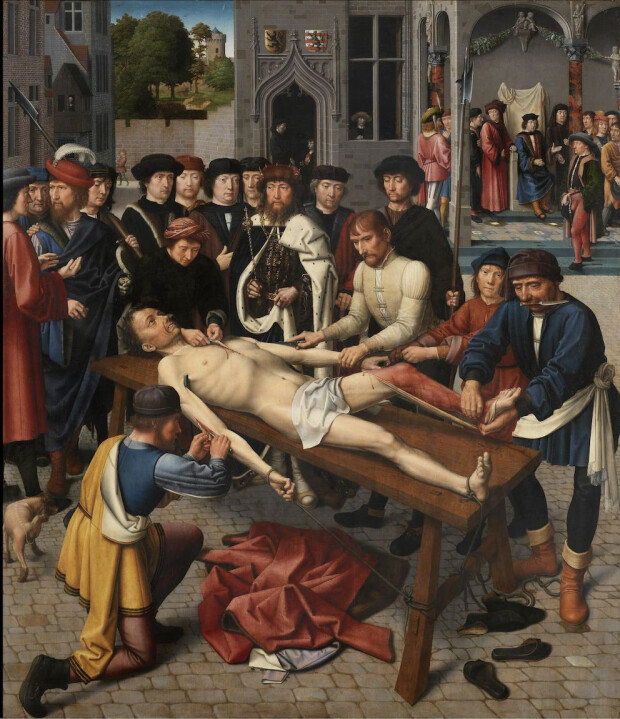Judgment of King
Judgment of King
Posted February. 01, 2024 07:56,
Updated February. 01, 2024 07:56

A naked man is tied up on a deathbed surrounded by a crowd watching executioners skillfully flaying the skin. With all his limbs tied, his frowning face shows the pain that he goes through. What has brought this man to the point of getting such a horrendous punishment alive?
“The Flaying of Sisamnes” is one of the leading works of Gerard David, a Dutch artist who built on his career in Bruges, Belgium in the 15th century. Around the age of 40, he gained fame across the region thanks to his paintings of lively hues and picturesque descriptions drawn catering to patrons’ needs and demands. Commissioned by the city’s council members, the work was supposed to be put up at the city hall. It shows how a death sentence was executed on the royal judge Sisamnes, who was guilty of irregularities according to the judgment of King Cambyses II in ancient Persian times. When he was found to accept bribes and manipulate rulings, the king immediately put him under arrest and flay the skin. He has the peeled skin covering the chair of the judge. Appointing the corrupt judge’s son, Otanes, to take on his job, the king clarifies how a corrupt judge will end up and underscores fairness. Otanes is seated in the chair covered with the peeled skin at the right corner of the painting.
Interestingly, the artist applies styles in vogue during his time to clothes and buildings in the backdrop while describing an ancient story. For example, the red garment left on the ground is also an official uniform of Belgian judges. Among the executioners is a young boy seemingly looking at viewers outside the frame. He may imply that future generations will witness the scenes as well. As such, the artist associates ancient stories with the time he lived.
Although graphic and violent, this painting seems to give a clear message to the next generations that corrupt judges contribute to grave criminal acts that shake the foundations of society. The 15th-century painting resonates today, asking what punishment will await those in power, including judges who ignore work ethics due to personal connections or monetary gains.
Headline News
- ‘Literature class with Han Kang’s writing for 10 years,’ says Oxford professor
- Gold price reaches new record high
- Moon Da-hye appears at police after drunk driving accident
- N. Korea redefines S. Korea as ‘hostile state’ in revised constitution
- Samsung develops graphic DRAM with industry-leading capacity and speed







